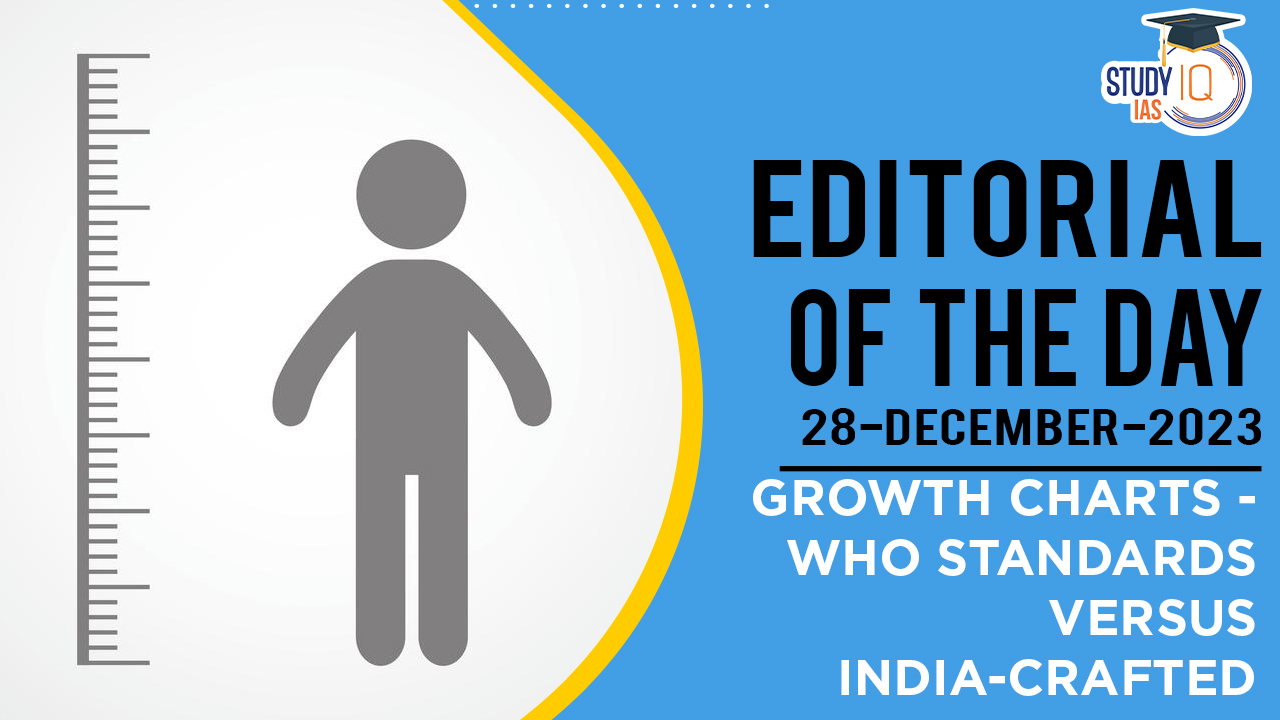Table of Contents
Context: India faces a persistent challenge: widespread child undernutrition. Measuring this issue, however, presents complexities due to concerns surrounding the WHO Growth Standards, the current benchmark used for calculations.
WHO Growth Standards Based On
- The WHO Growth Standards stem from the Multicentre Growth Reference Study (MGRS) carried out between 1997 and 2003 across six nations: Brazil, Ghana, India, Norway, Oman, and the USA.
- In India, the study participants were selected from affluent families in South Delhi, with children who were in a beneficial growth setting, breastfed, and had mothers who did not smoke, meeting all the study’s eligibility requirements.
We’re now on WhatsApp. Click to Join
Issue/Concern with the WHO Growth Standards
- Genetic Differences in Growth: There are concerns about the MGRS standards not accounting for the unique genetic growth potential of Indians compared to other populations, particularly considering the impact of maternal height on child growth.
- Maternal Height Factor: Maternal height, a non-alterable factor, raises questions about the extent of growth improvement achievable within a single generation.
- Indicators of Deprivation: Low average maternal heights often indicate intergenerational poverty and the marginalisation of women, suggesting the need for stunting measures that reflect these broader socio-economic deprivations.
- High Standards and Misdiagnosis Risk: The WHO standards are perceived to be excessively high, potentially leading to misdiagnosis in nutrition assessments.
- Overfeeding in Government Programs: There is a risk that such misdiagnoses could result in overfeeding children in government-led nutrition initiatives, especially concerning the rise of non-communicable diseases in India.
- Sample Selection Challenges: Locating samples that adhere to the MGRS’s favourable growth environment criteria proves difficult in India, where disparities are prevalent and affluent segments are less represented in surveys.
- Example: Even among children (six-23 months) in households of the highest quintile in the National Family Health Survey (NFHS)-5 (2019-21), only 12.7% meet the requirements of a ‘minimum acceptable diet’ as defined by WHO.
- While nearly all mothers in the MGRS had over 15 years of education, NFHS-5 data shows that just 54.7% of women have completed 12 or more years of schooling.
- Example: Even among children (six-23 months) in households of the highest quintile in the National Family Health Survey (NFHS)-5 (2019-21), only 12.7% meet the requirements of a ‘minimum acceptable diet’ as defined by WHO.
- Study Methodologies Differ: Unlike NFHS or the Comprehensive National Nutrition Survey, the WHO-MGRS included a counselling component for proper feeding practices.
- Standards vs. Prevalence: The MGRS was designed to set prescriptive growth standards, in contrast to prevalence studies like NFHS which measure actual conditions.
- Comparison Challenges: Directly comparing MGRS standards to data from surveys like NFHS without considering the methodological differences and objectives could lead to misleading conclusions.
Measures to effectively tackle undernutrition
- Enhance Meal Quality in Nutrition Programs: Meals need to be balanced, not just cereal-based, and should include a variety of nutrients to promote dietary diversity.
- Incorporate Diverse Food Items: Implementing recommendations to include eggs for children and pulses in the Public Distribution System is crucial.
- Broaden the Approach: Addressing undernutrition requires a multi-faceted approach, including improved sanitation, better healthcare access, and childcare services.
- Socio-economic Improvements: Enhancing livelihoods, reducing poverty, providing education, and empowering women are critical steps for better nutrition.
- Revising Growth References: The Indian Council of Medical Research is revising India’s growth standards, though maintaining WHO standards is vital for global comparisons and monitoring national trends, a benefit that might be compromised with new country-specific standards.


 Somaliland Explained: Location, History,...
Somaliland Explained: Location, History,...
 Signals from the Indian Economy: What Ke...
Signals from the Indian Economy: What Ke...
 Reforms Needed in India’s Political Fu...
Reforms Needed in India’s Political Fu...

























